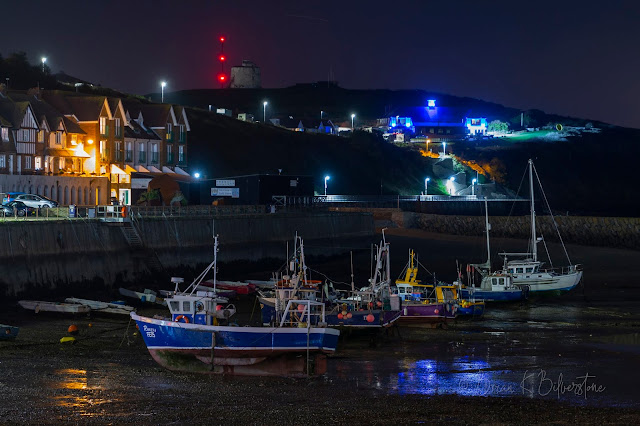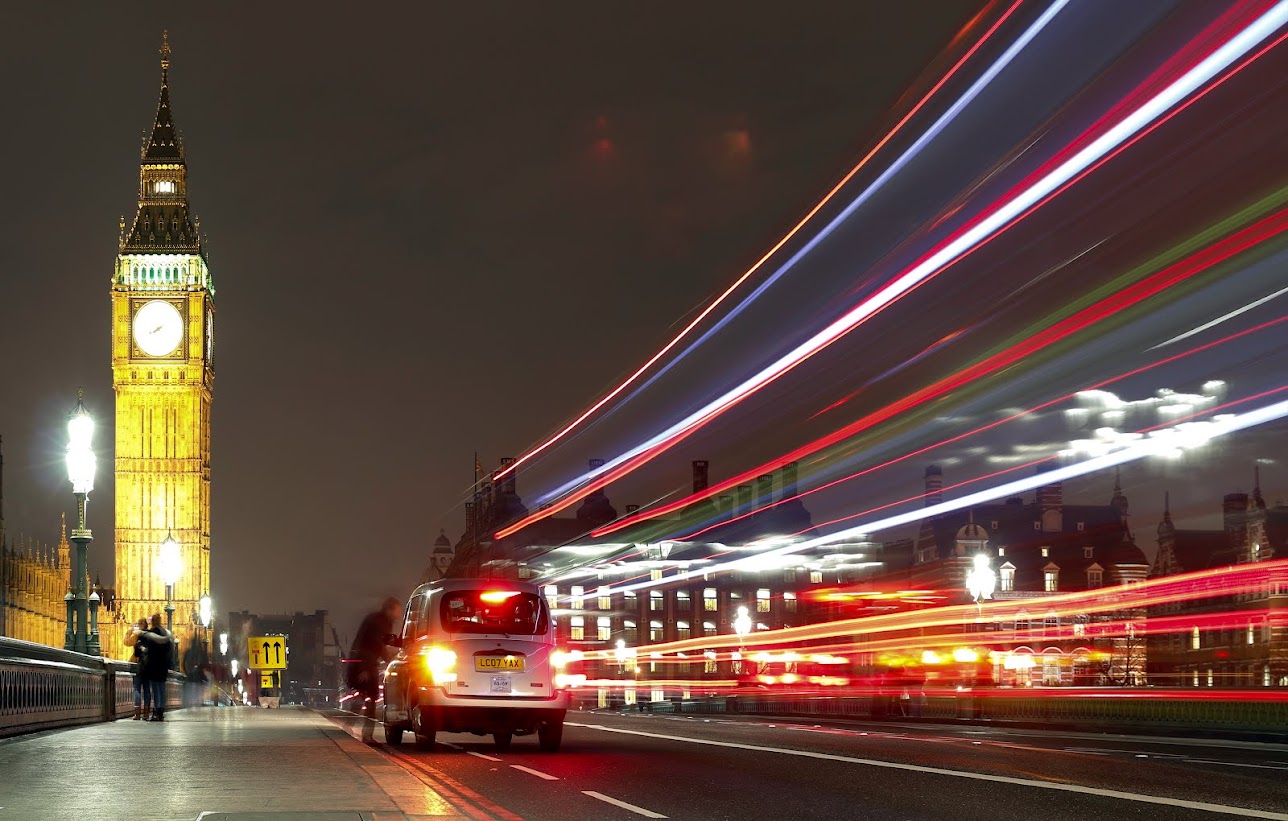The challenges are different from shooting in daylight and it is like having to learn how to take a photograph all over again.
I benefitted from going on a couple of evening courses a few years ago, which gave me the basic tools with which to experiment.
To date, the shot I took back then of the Isle of Dogs is still the most visually arresting night shot I have created. But I have managed a few decent efforts since then.
 |
Isle of Dogs, London, from the beach at Rotherhithe
f/11 ---- 30 secs ---- ISO 100 ---- 28mm
|
I like capturing trails of light, and roads with vehicles moving along them are great for that.
I came across a new challenge recently on a visit to Folkestone. Both the inner and outer harbours were bordered by light sources whilst being, in themselves, in shadow.
 |
In Folkestone, the bright lights of the hotel did more to accentuate shadow than to illuminate the harbour
f/5.6 ---- 5 secs ---- ISO 100 ---- 24mm
|
I actually had to start think about angles and light direction. It was a great, if unplanned lesson but I think I got some decent results in the end.
Judge for yourself.
 |
The outer harbour, Folkestone, was deep in shadow, requiring a much longer exposure with a wide aperture
f/2.8 ---- 30 secs ---- ISO 100 ---- 70mm
|




































